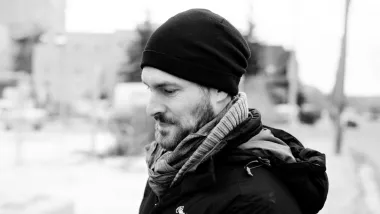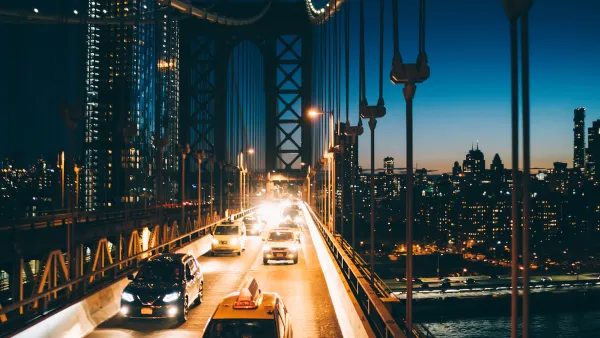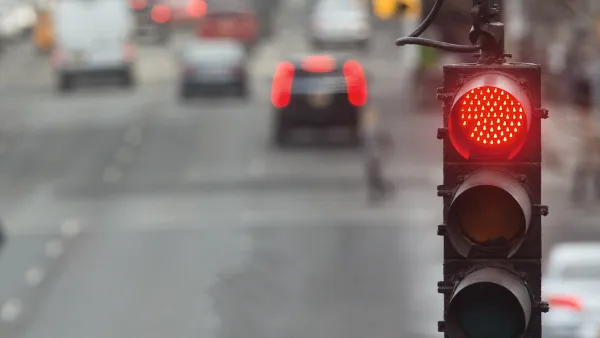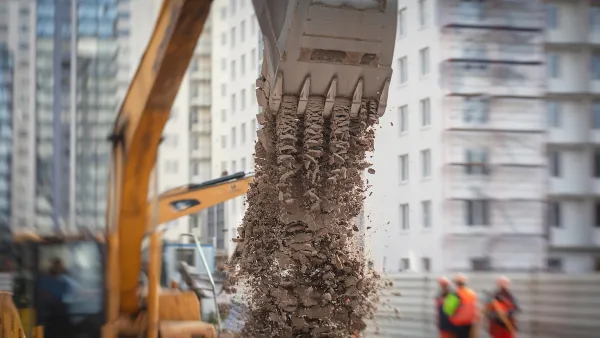One way to address traffic congestion is to provide a bypass for vehicles around city traffic machinations. Ring roads, by definition, are meant to perform that function. In reality, they ignore the supply and demand model of traffic management.
The economic cost of traffic congestion in cities is significant. The Canadian Taxpayer Alliance for example states that in Toronto the cost of traffic amounts to more than one and a half billion dollars per year in lost productivity (not to mention additional consumption of greenhouse gases and resulting pollution and smog from inefficiently operated vehicles – which also bear economic costs).
One way to address traffic congestion is to provide a bypass for vehicles around city traffic machinations. A ring road, by definition, is to serve as exactly that. If there’s congestion on city roads, a ring road will provide an alternate route for traffic to circumnavigate the city.
But definitions can differ from reality. Does a ring road act as an orbital around the city? If there is urban development beyond it, by definition, it is not a ring road. If the road acts to increase capacity in the transportation network – building more roads to provide additional route choice to reducing traffic – then it is less a ring road and simply additional urban road infrastructure. However, increasing road supply does not equate to traffic alleviation.
I’ve written previously about the supply and demand model of traffic management. In brief, traffic is a function of demand. Too much demand exhausts the resource, in this case, roads. More resource is thus produced to accommodate demand; demand meets supply; repeat. More roads equal more traffic. In this case, a ring road produces more traffic. Or as expressed through a city planning model, a ring road – by adding more road capacity to the vehicular transportation network – allows the perpetuation of auto-centric planning.
Tim Miller writes in China’s Urban Billion, that ring roads allow the increase of “potential area for urban development in one stroke, as all land within an orbital will quickly become fair game for development.” Citing the World Bank, Miller continues, “What’s the best way to take land? … You draw a circle around the city and call it a ring road. It’s the most efficient way of circumscribing rural land. This means you have all the incentives for urban sprawl.” Anecdotally, Mr. Miller notes Beijing has five ring roads.
A demand for roads can be tied to the design of a community. Seeking efficiencies in a system designed for automobiles through the provision of additional road capacity does not resolve the underlying issue. If traffic congestion is to be ameliorated, supply shouldn’t be addressed. Address demand. By focusing on supply (i.e. building more roads), and not demand (i.e. augmenting a city to lessen vehicular demand), the production of an auto-centric city continues.
To ensconce my tongue deeply in my cheek, as city historian Lewis Mumford said, “Forget the damned motor car and build the cities for lovers and friends.”
Editor's Note: This post was revised on 11/15/2013

Analysis: Cybertruck Fatality Rate Far Exceeds That of Ford Pinto
The Tesla Cybertruck was recalled seven times last year.

National Parks Layoffs Will Cause Communities to Lose Billions
Thousands of essential park workers were laid off this week, just before the busy spring break season.

Retro-silient?: America’s First “Eco-burb,” The Woodlands Turns 50
A master-planned community north of Houston offers lessons on green infrastructure and resilient design, but falls short of its founder’s lofty affordability and walkability goals.

Test News Post 1
This is a summary

Analysis: Cybertruck Fatality Rate Far Exceeds That of Ford Pinto
The Tesla Cybertruck was recalled seven times last year.

Test News Headline 46
Test for the image on the front page.
Urban Design for Planners 1: Software Tools
This six-course series explores essential urban design concepts using open source software and equips planners with the tools they need to participate fully in the urban design process.
Planning for Universal Design
Learn the tools for implementing Universal Design in planning regulations.
EMC Planning Group, Inc.
Planetizen
Planetizen
Mpact (formerly Rail~Volution)
Great Falls Development Authority, Inc.
HUDs Office of Policy Development and Research
NYU Wagner Graduate School of Public Service





























